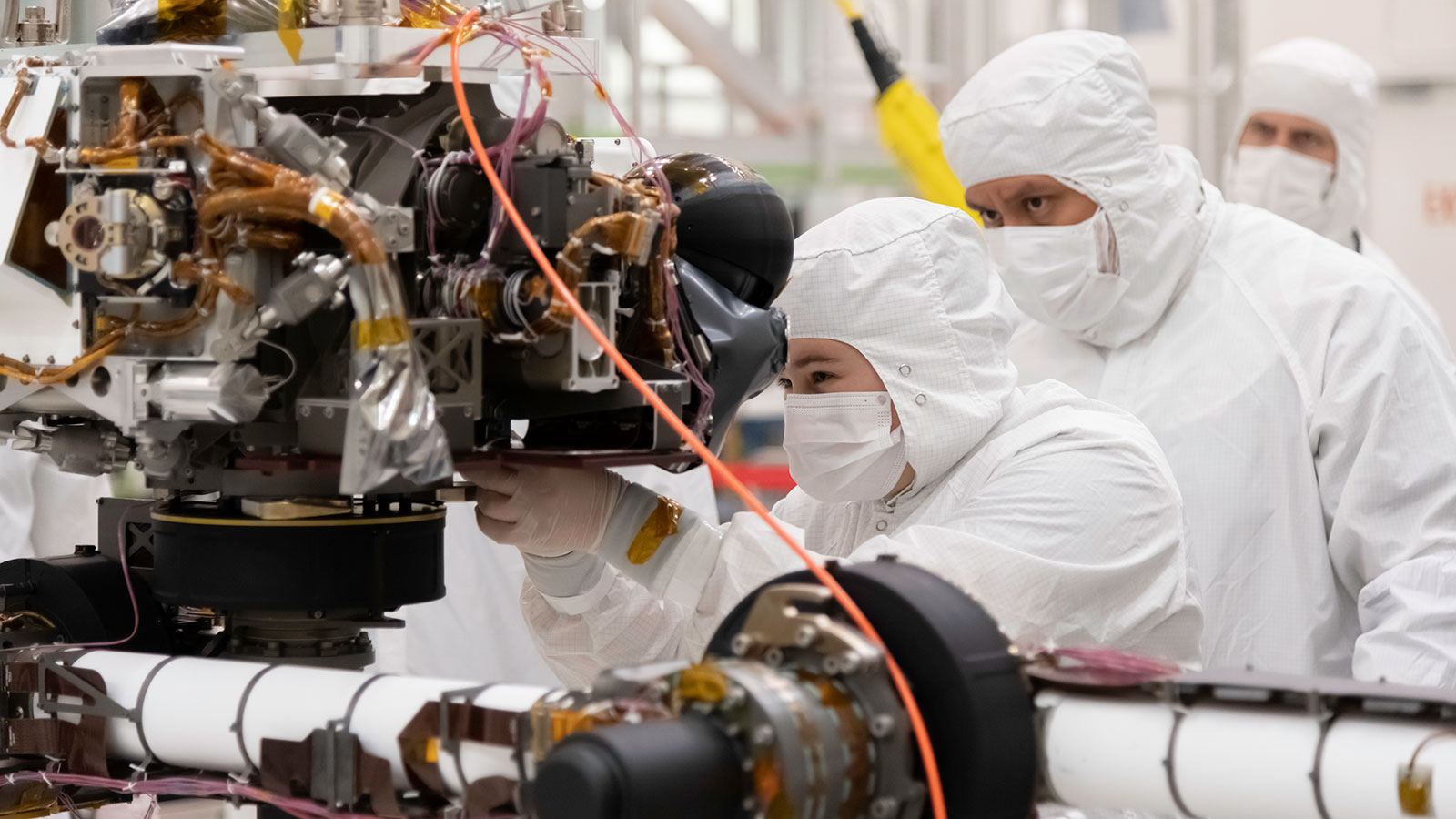The launch period for NASA’s Mars 2020 rover opens exactly one year from today, July 17, 2020, and extends through Aug. 5, 2020. The mission will launch from Cape Canaveral Air Force Station in Florida and land at Mars’ Jezero Crater on Feb. 18, 2021.
“Back when we started this project in 2013, we came up with a timeline to chart mission progress,” said John McNamee, Mars 2020 project manager at NASA’s Jet Propulsion Laboratory in Pasadena, California. “That every single major spacecraft component on a project with this level of innovation is synching right now with that timeline is a testament to the innovation and perseverance of a great team.”
In this image, taken on July 11, 2019, engineers at JPL install a sensor-filled turret on the end of the rover’s 7-foot-long (2.1-meter-long) robotic arm. The rover’s turret includes HD cameras, the Scanning Habitable Environments with Raman & Luminescence for Organics & Chemicals (SHERLOC) science instrument, the Planetary Instrument for X-ray Lithochemistry (PIXL), and a percussive drill and coring mechanism.
On Mars, the arm and turret will work together, allowing the rover to work as a human geologist would: by reaching out to interesting geologic features, scraping, analyzing and even collecting them for further study via Mars 2020’s Sample Caching System, which includes 17 motors and will collect samples of Martian rock and soil that will be returned to Earth by a future mission.
JPL is building and will manage operations of the Mars 2020 rover for the NASA Science Mission Directorate at the agency’s headquarters in Washington. NASA will use Mars 2020 and other missions, including to the Moon, to prepare for human exploration of the Red Planet. The agency intends to establish a sustained human presence on and around the Moon by 2028 through NASA’s Artemis lunar exploration plans.
If you want to send your name to Mars with NASA’s 2020 mission, you can do so until Sept. 30, 2019. Add your name to the list and obtain a souvenir boarding pass to Mars here:
https://go.nasa.gov/Mars2020Pass
For more information about the mission, go to:
https://mars.nasa.gov/mars2020/
DC Agle
Jet Propulsion Laboratory, Pasadena, Calif.
818-393-9011
agle@jpl.nasa.gov
2019-147


























